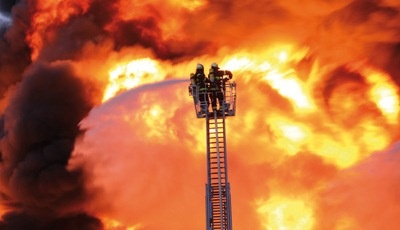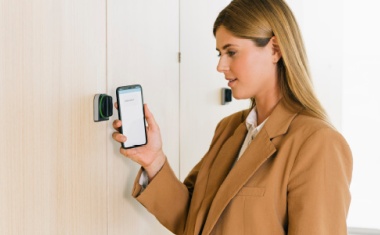Lifts for Emergency Evacuation
According to ISO/TR 25743/201 (International Standards Organisation), lifts can play a part in the general evacuation of tall buildings; however whether they reduce or increase eva...


According to ISO/TR 25743/201 (International Standards Organisation), lifts can play a part in the general evacuation of tall buildings; however whether they reduce or increase evacuation times will depend on ‘what and where'.
There are many reasons why a building may need to be evacuated, such as a fire, explosion, chemical or biological attack, flooding, storm damage or earthquake. In some cases the occupant(s) may have difficulty descending stairs in the event of an emergency and it would therefore be reasonable for those occupants to be able to use the lift for rapid descent to ground floor levels. The decision as to whether to use the lift or not will be determined by a number of factors.
Evaluate the Situation
Firstly where is the fire? Is the fire is in another building or far from the local vicinity? Secondly, how many persons are expected to enter the lift? This will depend on the number of wheelchair users and the maximum payload of the lift car. Once fire starts to spread, the situation becomes dynamic and alternative strategies will need to be put in place depending on whether the fire is fast or slow spreading and whether smoke is contained.
Evacuation Lifts
In buildings which have an Evacuation Lift, this lift must:
- 1. Be clearly identified
- 2. Be situated within a protected area
- 3. Have at least 2 hours fire resistance for lift doors and surrounding area
- 4. Have independent switch controls
- 5. Have a primary and exclusive power supply
- 6. Have at least 2 hour fire rated electrical supply and electrically operated apparatus
- 7. Have at least a 400kgs load capacity
- 8. Have a good communication system for both the occupant in the lift and outside.
- 9. Must be able to pass through a hazard zone e.g. smoke and high temperatures
In certain types of emergencies lift evacuation would be inappropriate. For example where there is a gas escape which is highly combustible or a biological gas attack which could spread due to windage. In some buildings the lifts could be affected by misalignment due to impact, high winds, or water erosion and the question of who may be in the lift is also paramount.
The Role of Building Management Systems
Modern buildings, with large numbers of occupants, will probably have a sophisticated Building Management System (BMS) in place which is capable of communicating data to the Building Management. The BMS will be designed for the needs of the building and should have a strategy in place for dealing with phased evacuation, and prioritising those with walking difficulties which may involve relaying from one lift system to another thereby leaving the express lifts for the Fire Service.
Less complex buildings may not have a BMS and may only have one lift. These may be for general use and not designated for evacuation or as a fire proof lift. In such cases the warning "In the Event of Fire Do Not Use Lift" remains the best and only advice.
If lifts cannot be used for whatever reason, all is not lost. With walking speeds of 0.82 meters per second most 10 storey buildings can be evacuated under 3 minutes. There are number of stairway evacuation devices on the market, one is the Evac+Chair which was introduced in 1985. Using this device even descent from 20 floors will only take 5 minutes, and so offers a quick and safe alternative route to ground.
There is no doubt that very tall buildings require new intelligent means of escape, but for the vast majority of the population who work or visit buildings of 20 floors or less or have a single lift service, then stairs will remain the best route to safety. The warning sign "In the Event of Fire Do Not Use Lift" is sound advice.
Bibliography: BS 9999.2008 ISO / TR 25743/2010
Business Partner
EVAC Chair Internat. Ltd.Weston Lane, Paraid Hs.
Birmingham B11 3RS
Germany
most read

Dormakaba: Smart Access with Spatial Experience
Smart Access at The Henderson Enabled by dormakaba Access Solutions

Assa Abloy's battery-powered Aperio KL100 secures lockers
Boost workplace security and operational flexibility by securing more than just doors.

Is Your Venue Ready for Martyn’s Law?
Martyn’s Law demands stronger security by 2027. Is your venue prepared to protect and respond?

Liverpool Heart and Chest Hospital Transforms Security with Verkada’s Hybrid Cloud Technology
NHS Trust boosts safety and efficiency with Verkada’s cloud-managed cameras and AI-powered incident response








